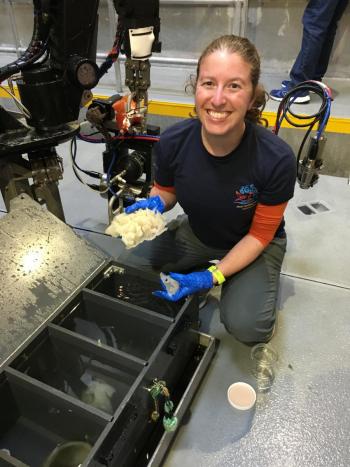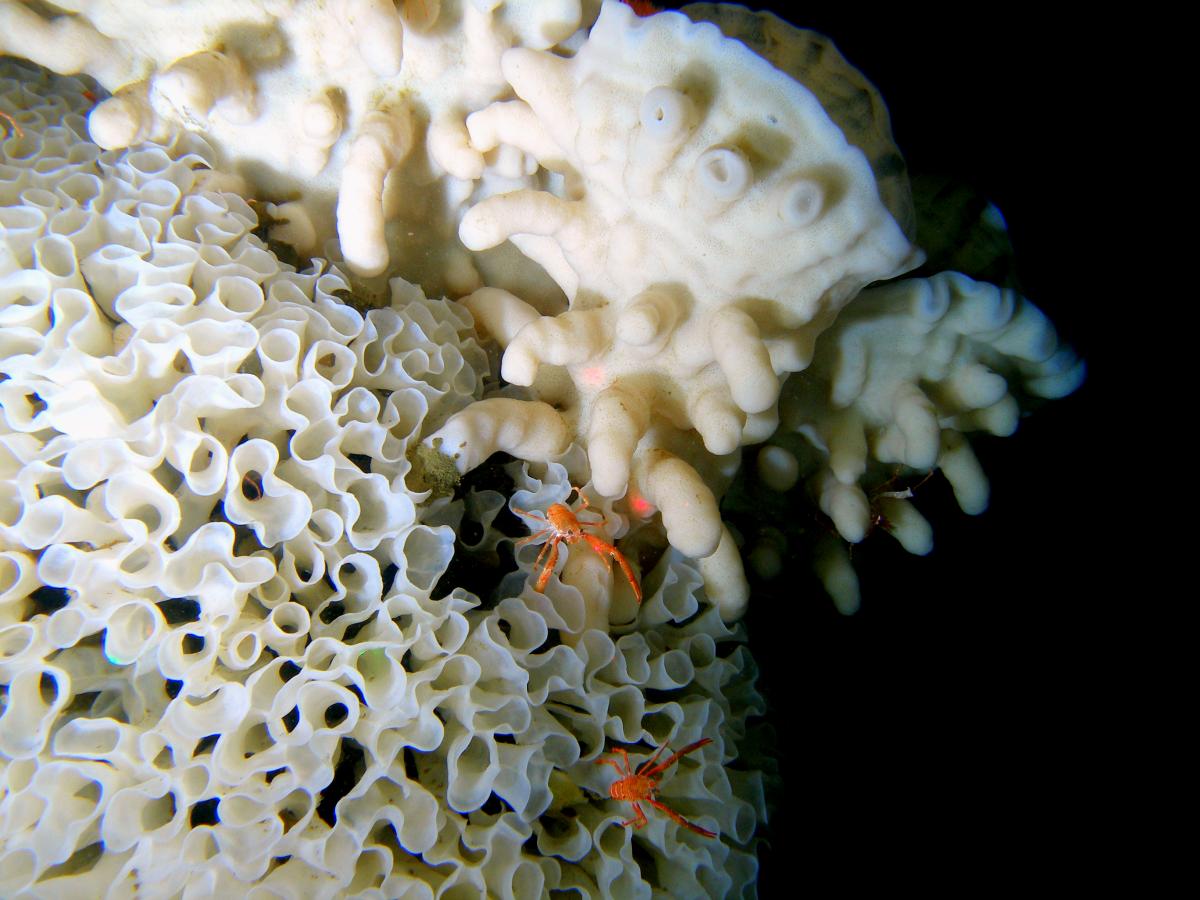
A summer camp at the Don Edwards Wildlife Refuge in the wetlands of San Francisco Bay as an elementary-schooler sparked Amanda Kahn’s interest in marine science. When she learned about wetlands and the bay’s habitats, Amanda knew it would be exciting to study science. At college at Cal State East Bay she explored botany and biomedical research, but found she was drawn to marine biology. After attending an open house at Moss Landing Marine Laboratories (MLML) late in college, Amanda went to the lab for her senior year and felt she had found her scientific home.
Wonders of the Deep Sea
While an undergrad, Amanda did an internship with Monterey Bay Aquarium Research Institute (MBARI) and learned about the wonders of deep sea creatures and their adaptations for the deep where there’s so little food. Amanda went on to get her PhD on research about glass sponge reefs in southern British Columbia looking at their feeding and the effect their feeding has on the ecosystem.
Out on the Boat
Now in 2024, she's an Assistant Professor of Marine Science at San Jose State University's Moss Landing Marine Labs. Amanda’s research focuses on the effect of filter feeders, especially sponges, on their environment. She found that sponge reefs are like an oasis in the deep sea where they turn their waste into a form that’s edible to other creatures. They connect the microbial food web to the rest of the food web.

Glass Sponge
Sponge Poop Pants
Amanda found this out by creating “sponge diapers” to capture sponge poop. She found that the fecal pellets expelled from sponges are 100-1000 times larger than microplastic beads. Working with scientists at MBARI, Amanda has been able to quantify the amount of water sponges pump and how much food they extract.
The Advantages of Being a Glass Sponge
Since glass sponges have silica skeletons, Amanda could mark new skeleton and see where new tissue and skeletal growth is. She found that the feeding chamber cells of hexactinellid glass sponges don’t have to spend as much energy maintaining their tissues as other sponges. And they have a different, energy efficient mechanism to produce new cells, which all help them to live in food-poor deep water.
The glass sponges are essentially one big cell. Since they have one common cell membrane, it’s easier to transmit food and skeletal elements through that cytoplasm. Even though glass sponges have no nerves, they can propagate electrical signals across their soft tissue. They do contract and expand as documented by MBARI video. In the lab, Amanda describes them as “dynamic creatures” that appear to discriminate between some flows of water. And some vibrations from music – like rock – disrupt their water flows.
Sponges VS Climate Change
Sponges seem to be on the winning side of climate change on coral reefs. As corals die back, sponges grow in abundance, especially in the Caribbean. Working with Ivano Aiello, Professor of Geological Oceanography at Moss Landing Marine Lab and Philip Heller, Professor of Computer Science at SJSU, Amanda is examining deep sea cores from about four million years ago. In those cores Amanda recognizes the skeletal remains of sponges. With a long geological history as a resource, she investigates whether glass sponges do better in warm or cold periods in the ocean. From this data we can predict if they will survive the radical changes as a result of climate crisis.
Teaching with Shape of Life
Amanda uses Shape of Life in both her Invertebrate Zoology and Invertebrate Natural History classes. She reminds her students that we all see things from our own lens as humans and how that parallels with sponges and other invertebrates who illustrate all the unique forms that life can take.
“We have a lot to learn from Sponges. For example, we can think about how sponges, which seem so alien, function as multi-cellular animals”, said Amada.
Amanda encourages science students to ask lots of questions and for help. “Be comfortable with being uncomfortable.”
More:
















